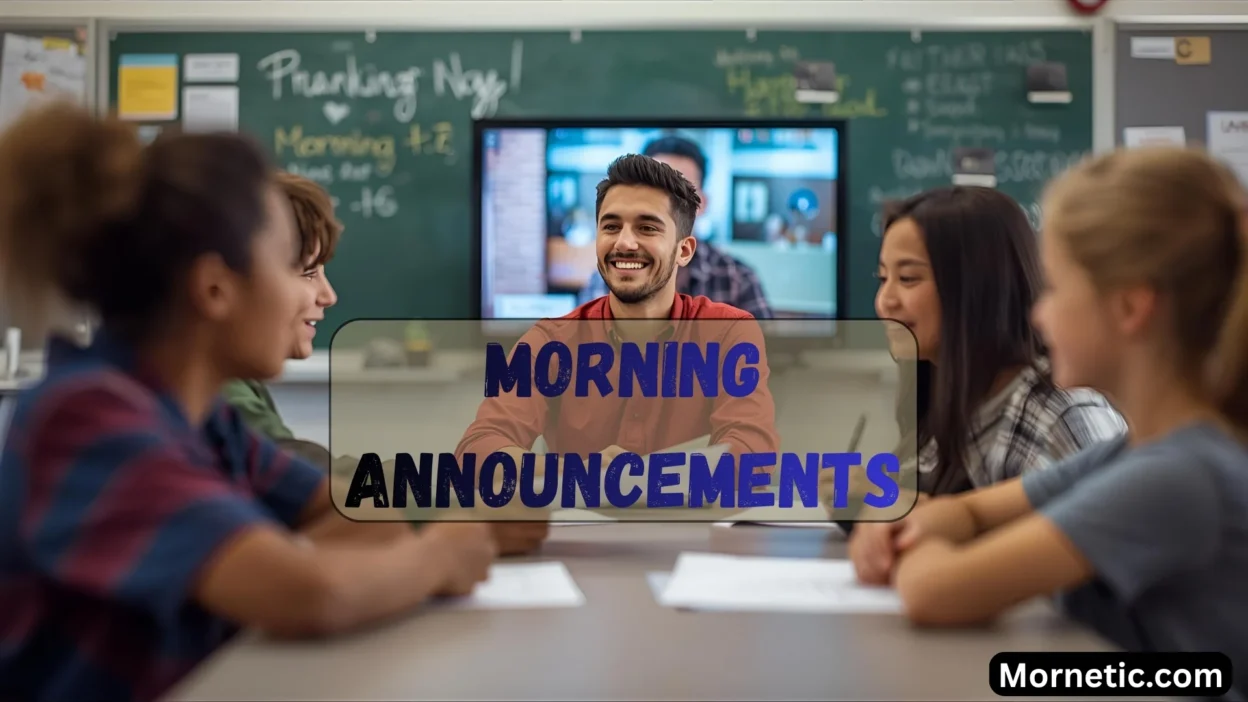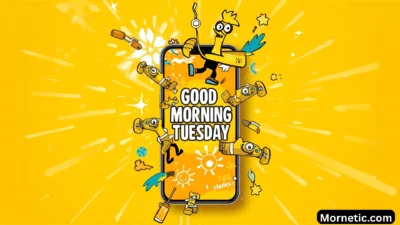In the dynamic landscape of education, morning announcements have transformed from a routine checklist read over a crackly intercom into a powerful platform for building school community, celebrating achievements, and disseminating vital information. For teachers, administrators, and student media leaders, mastering this daily ritual is key to starting the day on a positive and productive note. A well-executed announcement can set the tone for the entire school, fostering a sense of belonging and shared purpose.
This ultimate guide for 2026 delves into everything you need to know—from foundational formats to creative, recurring segments and the technical steps for launching a modern broadcast program. Whether you’re looking to revitalize an existing system or build one from the ground up, you’ll find actionable strategies to make your morning announcements a highlight of the school day.
What Are Morning Announcements?
At their core, morning announcements are a daily briefing designed to inform the entire school community about essential news, events, and updates. Traditionally delivered via intercom by a principal or student, they often include the Pledge of Allegiance, daily thought, and special messages like congratulations for team victories.
However, the modern evolution of morning announcements has seen them evolve into a form of “infotainment”—a few minutes of peppy, interesting content that helps students and staff start the day with more enthusiasm. When done effectively, they move beyond a one-way information dump and become a interactive tool that strengthens the school’s culture and gives students a valued voice.
Why Morning Announcements Matter More Than Ever
In an age of fragmented attention and digital distractions, a consistent and engaging morning announcement program serves several critical functions that extend far beyond sharing the lunch menu.
- Fosters a Unified Community: A shared daily experience creates common ground. Hearing the same news, celebrations, and messages helps build a strong, connected school identity
- Amplifies Student Voice and Leadership: When students take the lead in producing and delivering announcements, they build immense confidence and communication skills
- Improves Information Flow: Essential information—from schedule changes and club meetings to safety reminders—reaches everyone simultaneously
- Celebrates Achievements: Regularly highlighting student and staff accomplishments creates a culture of appreciation and recognition
- Prepares Students for the Future: Running a broadcast announcement program provides hands-on experience in video production, public speaking, and teamwork
The Traditional Format and How to Improve It
Many schools follow a familiar structure for their announcements. While this provides consistency, even small tweaks can significantly boost engagement.
A typical traditional announcement might include:
- Obligatory Salutation: “Good morning, Vikings!”
- Pledge of Allegiance
- Thought for the Day
- Daily Announcements: Lunch menu, club meetings, sports results
- Special Message: Congratulations or important reminders
✨ How to Enhance the Traditional Format
To prevent this format from becoming stale, consider these easy additions:
- Motivational Quote: Replace a generic “thought for the day” with an inspiring quote from a famous leader or historical figure
- Word of the Day: Introduce a sophisticated vocabulary word with a quick definition to foster academic growth
- Student Appreciation: Dedicate a moment to draw attention to exceptional student work
- Birthday Shoutouts: Acknowledge student and staff birthdays to build personal connections
- Music Segment: Include 30 seconds of a student-selected appropriate song to boost energy
8 Creative Morning Announcement Segments to Captivate Your Audience
Adding recurring segments is one of the most effective ways to create anticipation and regular engagement. Assign a team of student producers to each segment to distribute leadership and creativity.
Table: Recurring Segment Ideas at a Glance
| Segment Name | Frequency | Description | Engagement Boost |
|---|---|---|---|
| Featured Faculty Member | Weekly | Highlight one teacher or administrator, asking about their career and interests | Humanizes staff and builds community |
| Weather Report | Daily | Have a student meteorologist give the forecast, using a green screen for professionalism | Fun, practical, and teaches presentation skills |
| Question Time | Weekly | Pose a question to various students and edit answers into a montage | Amplifies diverse student voices |
| Alumni Spotlight | Monthly | Interview a school alumnus about their career path and advice | Provides real-world inspiration |
| Featured Club | Weekly/Monthly | Showcase a different school club with interviews and event clips | Promotes extracurriculars |
| Sports Recap | Weekly | Create a mini “SportsCenter” with highlight clips and athlete interviews | Celebrates athletics |
| Tech Tip Tuesday | Weekly | Share a useful technology tip or app recommendation for students | Builds digital literacy |
| Community Connections | Monthly | Highlight local businesses, events, or volunteer opportunities | Strengthens community ties |
Leveraging Technology: The Power of Live Video Broadcasting
While intercom announcements are effective, the most significant leap in engagement comes from transitioning to a live video broadcast. Many schools are now streaming their announcements directly to classroom televisions, computers, or mobile devices.
🚀 Benefits of a Live Broadcast Program
- Deeper Emotional Connection: Visual content creates stronger engagement than audio-only formats
- Enhanced Student Learning: Students gain hands-on experience with video production, editing, and on-camera presentation
- Increased Enthusiasm: A professional-looking broadcast can make students more enthusiastic about school
- Flexibility: Recorded broadcasts allow for on-demand viewing for different classroom schedules
- Accessibility: Closed captioning and visual aids help accommodate diverse learning needs
A Step-by-Step Guide to Launching Your School’s Morning Show
Starting a broadcast program may seem daunting, but by breaking it down into stages, any school can build a successful show.
Phase 1: Foundation and Planning
- Assemble Your Team: Recruit students for on-air talent, writing, research, video editing, camera operation, and technical direction
- Define Your Format: Decide on show length, segment order, and broadcast frequency
- Create a Production Schedule: Establish timelines for writing, filming, editing, and broadcasting
- Develop Content Guidelines: Create standards for appropriate content, language, and visual elements
Phase 2: Acquiring Equipment and Building Your Set
You don’t need a Hollywood budget to start. A basic setup can include:
- Cameras: Smartphones or tablets can produce high-quality video
- Audio: Invest in lapel or shotgun microphones for clear audio
- Lighting: Simple ring lights or softbox lights improve video quality
- Teleprompter: Apps can turn a tablet into a teleprompter
- Background/Set: Design a consistent background with school colors and logo
- Editing Software: Free options like DaVinci Resolve or iMovie work well for beginners
Phase 3: Production and Execution
- Scriptwriting: Use a consistent template that includes visuals, audio cues, and speaker lines
- Rehearsal: Always hold a run-through to work out pacing and technical issues
- Broadcast and Recording: Stream live and record simultaneously for archiving
- Post-Show Review: Gather the team to discuss improvements for future episodes
Best Practices for Professional and Engaging Announcements
Regardless of your format, these core principles will elevate your announcements from good to great.
- Keep it Concise: Respect everyone’s time. Aim for 5-10 minutes maximum
- Prioritize Positivity: Frame announcements positively and celebrate successes
- Be Prepared and Rehearsed: Smooth, well-practiced announcements maintain credibility
- Encourage Student Leadership: The more students involved, the more the student body will care
- Embrace Visuals: Use titles, overlays, and graphics to make video presentations dynamic
- Maintain Consistency: Use the same opening and closing each day to build brand recognition
- Rotate Personalities: Feature different students to maintain fresh perspectives
Common Challenges and Solutions for Morning Announcements
Even well-planned announcement programs face obstacles. Here’s how to address common issues:
- Technical Difficulties: Always have a backup plan, such as pre-recorded segments or printed announcements
- Student Nervousness: Provide plenty of practice opportunities and start with smaller roles
- Content Gaps: Maintain an ongoing ideas list and encourage submissions from all students and staff
- Time Constraints: Use a strict timer during rehearsals and broadcasts
- Audience Engagement: Regularly survey students about what content they find most interesting
Measuring Success: How to Evaluate Your Announcement Program
To ensure your morning announcements remain effective, implement these evaluation strategies:
- Conduct Regular Surveys: Ask students and teachers what they like and what could improve
- Track Participation: Monitor how many students want to join the production team
- Monitor Engagement: Notice if classrooms are actively watching or treating broadcast time as background noise
- Assess Information Retention: Occasionally quiz students about information shared in announcements
- Review Technical Quality: Regularly assess and upgrade equipment as needed
2026 Trends in School Announcements
Stay ahead of the curve by incorporating these emerging trends:
- Interactive Elements: Use polls or QR codes that students can scan for more information
- Social Media Integration: Share announcement highlights on school social media channels
- Virtual Reality Elements: Experiment with VR backgrounds for special segments
- Student-Led Innovation: Create a committee specifically for testing new ideas and formats
- Accessibility Focus: Ensure all content is accessible with captions, audio descriptions, and transcripts
Frequently Asked Questions About Morning Announcements
How long should morning announcements be?
Ideal morning announcements last between 5-10 minutes. This provides enough time to share essential information without losing student attention. For video announcements, shorter segments (3-5 minutes) often work better.
What equipment do we need to start video announcements?
You can start with smartphones or tablets, basic microphones, and free editing software. As your program grows, consider investing in better cameras, lighting equipment, and professional editing software.
How can we get more students involved in announcements?
Create multiple roles with varying commitment levels, offer training sessions, and actively recruit students with diverse interests and talents. Consider offering course credit or community service hours for participation.
What content should always be included in morning announcements?
Essential content includes daily schedule information, important reminders, safety announcements, and celebrations of student achievements. Always prioritize information that affects the entire school community.
How do we handle sensitive or emergency information in announcements?
For sensitive information, follow school district guidelines. Emergency information should be delivered by authorized administration only and should be clear, calm, and followed by specific instructions.
Conclusion: Transforming Routine into Ritual
Morning announcements are a unique and powerful touchpoint in the school day. By moving beyond the “same old, same old” routine and investing in a structured, creative, and student-led program, schools can transform these few minutes into a cherished ritual. The goal is to create a broadcast that students and staff don’t just endure, but actively look forward to—a daily dose of community, information, and inspiration that sets a positive tone for everything that follows. By embracing the ideas and strategies outlined in this 2026 guide, you can ensure your morning announcements are not just heard, but truly listened to.

Grace is a lifestyle writer from California who loves starting mornings with positivity. At Mornetic, she shares uplifting quotes and cheerful messages to brighten your day.




